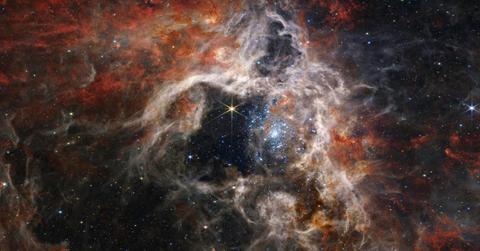Dark Matter Mystery: Telescope Uncovers Mysterious 11-Billion-Year-Old Galaxy That Defies Logic

Canadian farmer was shocked to find space debris on his farmland.
The James Webb Space Telescope has made a remarkable breakthrough, uncovering a colossal ancient galaxy surpassing the size of our own Milky Way.
The discovery reveals an astonishing find: a galaxy over 11 billion years old that defies conventional logic with its existence.
Dubbed ZF-UDS-7329, this ancient cosmic entity challenges prevailing theories on galaxy formation and our understanding of dark matter.
What confuses scientists is that ZF-UDS-7329 formed a mere 800 million years after the universe's inception, yet it boasts more stars than our Milky Way.
This peculiarity implies star birth without the influence of dark matter, contradicting established notions of galaxy formation, as explained by Live Science.
The findings, detailed in a paper published in Nature, stem from spectroscopic observations conducted by the James Webb Space Telescope.
This research, led by Professor Karl Glazebrook of Swinburne University of Technology, suggests that ZF-UDS-7329's stellar population emerged at a time when conventional dark matter structures had not yet developed.
Professor Glazebrook expressed the challenges faced in confirming the galaxy's nature, necessitating observations beyond Earth using the JWST.
Never miss a story — sign up for the Front Page Detectives newsletter. Be on the scene the moment news breaks.
The implications of this discovery extend far beyond current cosmological models. Dr. Themiya Nanayakkara, who led spectral analysis efforts, underscores the significance of uncovering ancient massive galaxies, questioning how they formed so rapidly in the universe's infancy.
Echoing this sentiment, Associate Professor Claudia Lagos of the University of Western Australia, involved in theoretical modeling, emphasizes the discrepancy between observed massive galaxies and the timeline for dark matter structure formation.
In essence, the revelation of this ancient galaxy promises to deepen our understanding of dark matter, shedding light on one of the universe's most enigmatic phenomena.
Become a Front Page Detective
Sign up to receive breaking
Front Page Detectives
news and exclusive investigations.
